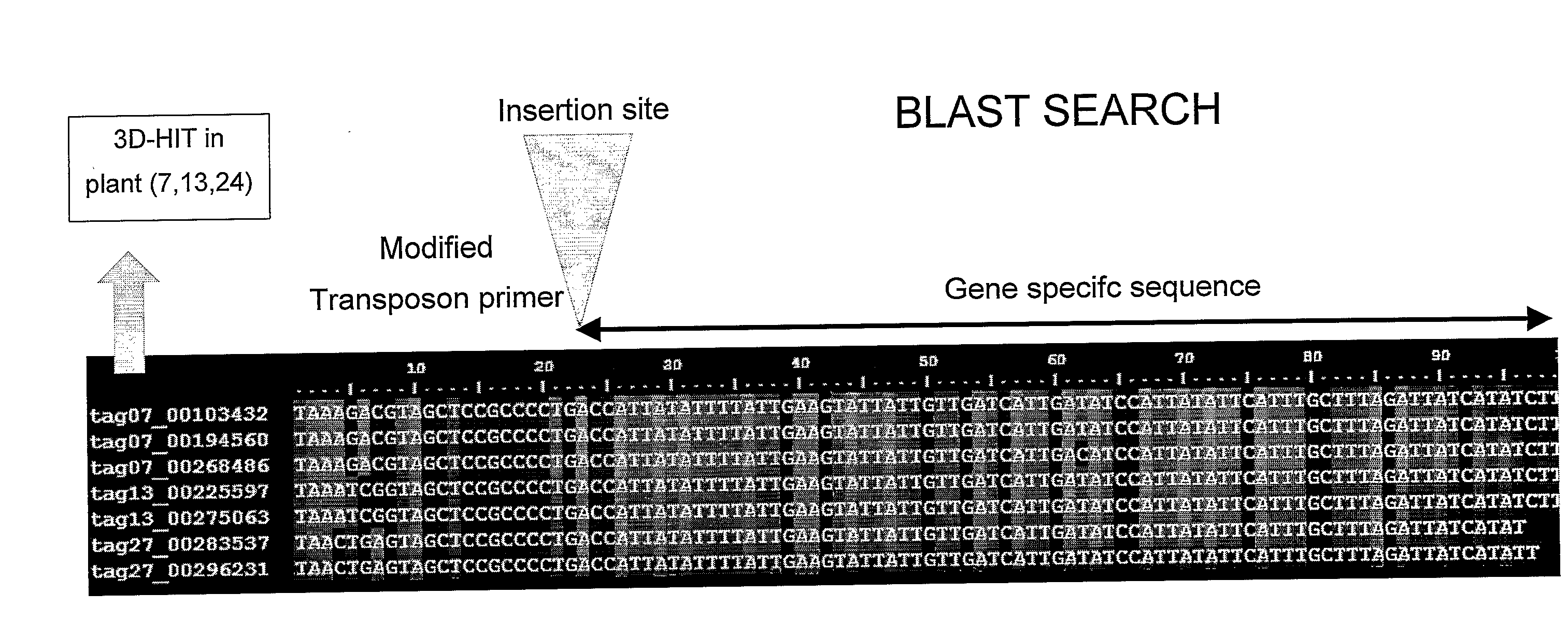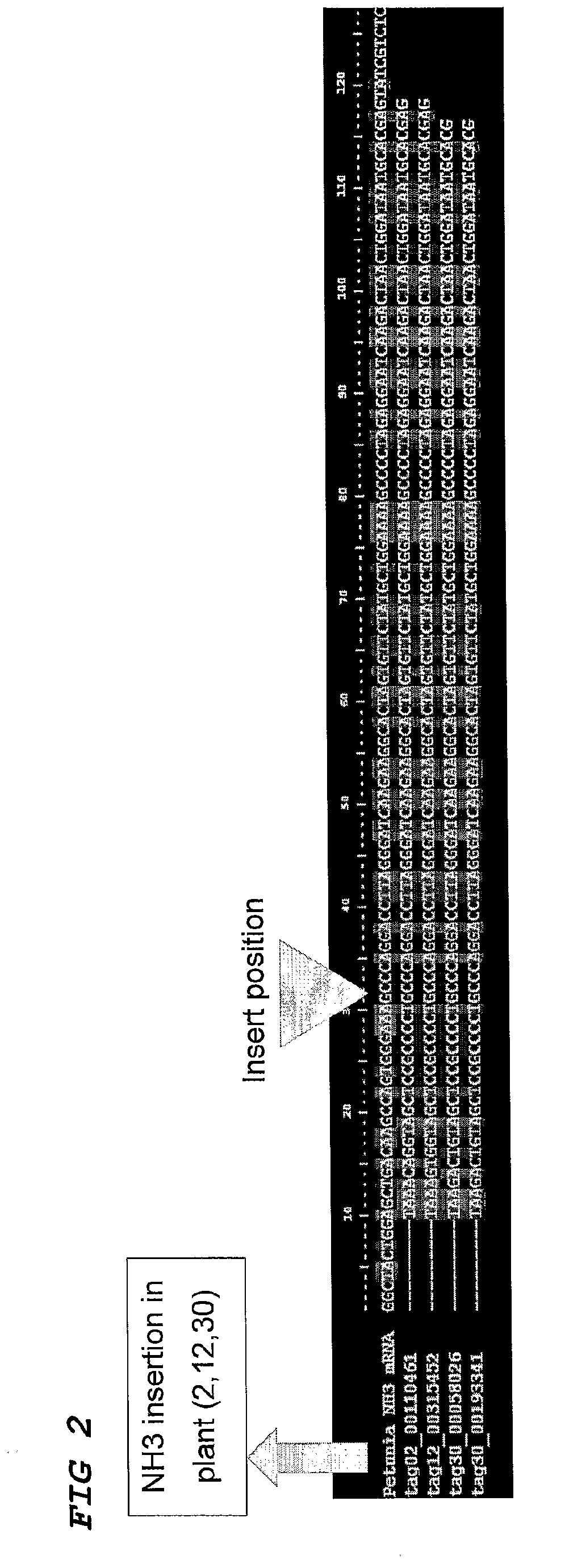Method for the High Throughput Screening of Transposon Tagging Populations and Massive Parallel Sequence Identification of Insertion Sites
a transposon and sequence identification technology, applied in the field of molecular biology and genetics, can solve the problems of difficult automation, low throughput, and rate-limiting step of methods
- Summary
- Abstract
- Description
- Claims
- Application Information
AI Technical Summary
Benefits of technology
Problems solved by technology
Method used
Image
Examples
example 1
[0092]A population of 1000 Petunia W138 plants was sampled according to the 3-Dimensional strategy as described by Vandenbussche et al. (2003) and others, resulting in 30 pooled samples (X1-X10, Y1-Y10 and Z1-Z10), covering every individual of the whole population with three coordinates. This enabled tracing back the origin of any specific PCR product to the plant of origin within the population.
[0093]The DNA samples were then digested with an enzyme, cutting inside the transposon and an enzyme cutting at a specific but random position in the flanking genomic DNA.
[0094]Adapters were then ligated to allow subsequent PCR amplification of all digested fragments. A biotinylated adapter was ligated to the internal transposon site. The DNA samples were then purified and biotinylated fragments collected by adding Streptavidin beads and using a magnet. All flanking sequences from all transposon insertions present in every DNA pool were then amplified using an adapted transposon display prot...
PUM
| Property | Measurement | Unit |
|---|---|---|
| temperature | aaaaa | aaaaa |
| temperature | aaaaa | aaaaa |
| temperature | aaaaa | aaaaa |
Abstract
Description
Claims
Application Information
 Login to View More
Login to View More - R&D
- Intellectual Property
- Life Sciences
- Materials
- Tech Scout
- Unparalleled Data Quality
- Higher Quality Content
- 60% Fewer Hallucinations
Browse by: Latest US Patents, China's latest patents, Technical Efficacy Thesaurus, Application Domain, Technology Topic, Popular Technical Reports.
© 2025 PatSnap. All rights reserved.Legal|Privacy policy|Modern Slavery Act Transparency Statement|Sitemap|About US| Contact US: help@patsnap.com



